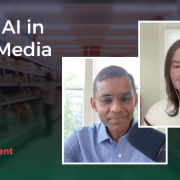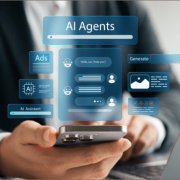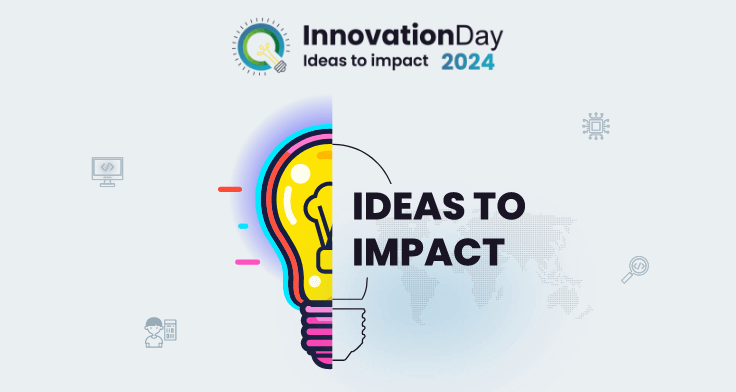Last week, we held our semi-annual innovation day to enable our associates to display solutions to help clients advance their Data & AI roadmaps. Based on our global work for clients & the work done in our innovation labs, our associates presented fifteen innovations, each solving a piece of the D&A puzzle in a unique way.
The theme of this Innovation Day, “Ideas to Impact,” emphasized that simply generating ideas or innovative solutions is not enough to create business value. The true value of these concepts and solutions lies in their effective implementation to address and solve actual problems.
To ensure our ideas create an impact – we focused on “show, not tell” and invited multiple clients (prospective & current) to visit us and interact with our teams. Here are the highlights from my experience:
1. Low-code, no-code products have turned the corner with code-first developers
We have partnered with multiple best-in-class companies – Nexla for data engineering, DQLabs for data quality, and Aquila Clouds for FinOps. It’s time to STOP custom-coding solutions in these three areas – no matter how flexible you think your home-grown tools are, these tools are better! Try them.
This validation came from comparing these tools with our previous home-grown solutions. For example, we used Nexla to develop a pipeline in just two hours for a use case that would take two weeks in the custom world! So, there is no comparison in time to value; the question is now about the total cost of ownership.
2. We “ate our own dog food” and liked it :)
We have developed & launched four productized solutions that challenge conventional thinking: DiscoverYai, Decision360, Employee360, and HyperCare. They come with our home-grown IP to solve specific problems, best-in-class technology, and fractional capacity to make clients successful.
When we talk to prospects about our innovations, often they like what they see but then default to a variation of “Which clients are using it?” or “Are you using it?” This past quarter, we used our Employee360 on our own data, and our Chief People Officer was intrigued by what she saw.
3. Use proof of value for vendor selection for large-scale migration projects
Migrations from one BI, ETL, or Big Data tool to another are inherently complex because users rely on legacy tools, and IT environments have knowledge debt. Unless there is a tickler (pricing increase or platform end-of-life support cliffs), we seldom see clients proactively consolidate. When they do, reducing switching costs and risks becomes their key challenge—there is never a clear path because vendors make it harder to get out of their platforms.
Our teams displayed multiple tools to help with such projects. We advise throwing a challenge to vendors and having them compete for them. In the past six months, we have seen clients succeed in their decision-making through such efforts over going through a paper-based RFP.
4. Customer data + behavioral data + low-cost prediction + workflow integration = Hyper-Personalization
The business growth of B2C enterprises clearly depends on hyper-personalization to reduce churn and increase customer lifetime value. With consumer buying patterns becoming more unpredictable with the evolution of digital channels, clients are struggling to realize value from their customer data.
Our teams have combined customer data with behavioral data using tools such as Snowplow, best-in-class tools such as Aible, and our own DiscoverYai for experimentation & management to deliver hyper-personalization use cases based on business value. This approach is very repeatable!
5. All roads to enterprise insights go through a data model
The proliferation of self-service BI tools has empowered business teams to conduct analysis independently and swiftly. The ELT architectures have deferred enterprise data modeling – the presumption is let us store data, and we will model it when needed. Both these trends have come at a cost – data consistency and trust in analytic outputs have suffered. Business executives are not happy.
We have seen the rise of the universal semantic layer. Tools such as AtScale, Kyvos Insights, and Kyligence are abstracting the enterprise data models out of the BI or databases and making it easier to slice and dice KPIs based on dimensions of interest. We have developed POVs that show the promise of these tools. Consider these tools if you need flexibility and scalability in the metrics your CEO cares about.
6. AI engineering will be the next frontier for CTOs to master
Over the last 12-18 months, multiple foundational AI capabilities have emerged through the hyper-scalers. However, enterprises would get value when they build end-to-end business applications from them. Simply having cloud services or a buffet of LLMs to pick from will not cut it.
Our associates have built multiple representative applications to improve customer experiences, business operations, and developer productivity. Examples include agents for Data Analysts and Transaction Reconciliation. These applications show promise, but they need a combination of data, application, and prediction engineering skills for enterprise integration—I collectively call these AI engineering skills. This will become the sought-after skillset for solution architects in the near future.
7. Data helps you differentiate, not models
Lastly, I was super excited to see our K-Hub implement generative AI capabilities to make our organizational knowledge accessible to different personas in their own language. We have implemented Azure OpenAI services to find, summarize, and check knowledge gleaned from our global engagements. The tools work and are amazingly easy to use.
But they will only make sense if we continue to curate the knowledge from the organization in one place. Since our initiative started three years ago, we have hundreds of high-quality (read human curated) artifacts in our K-Hub. This was and continues to be the hard part. The models are the easier part.
Curious to know how these innovations can enhance your business outcomes? Talk to us to explore our offerings and learn how they can boost the success of your Data & AI initiatives.
Recent Blogs

The Future of Supply Chains Is AI-Driven—Is Your Business Ready to Embrace the Change?
July 2, 2025

What Retail Media Can Learn from Instacart’s AI Strategy
June 24, 2025

Beyond Chatbots: How Agentic AI Is Automating High-Stakes Business Decisions
June 11, 2025

From Batch to Real-Time: The Future of Data Distribution Using Databricks Delta Sharing
June 4, 2025


